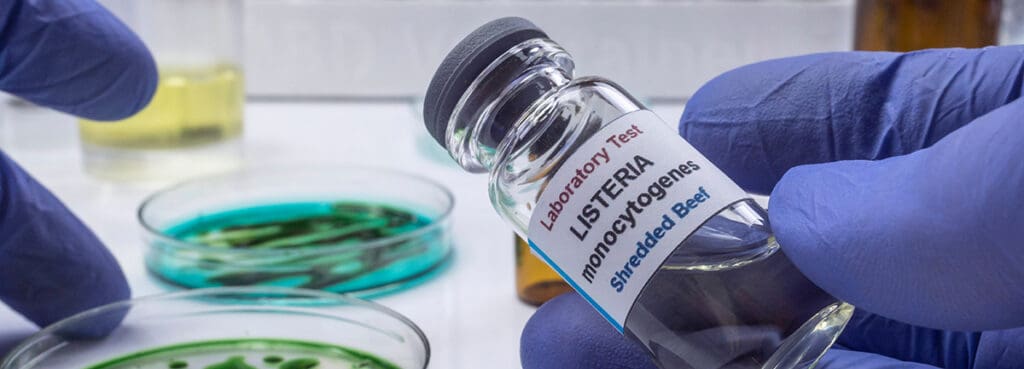Editor’s Note: This content was last updated 3/13/24.
Food processing facilities must maintain rigorous control over bacterial contamination within their premises. According to the U.S. Department of Agriculture’s (USDA) Food Safety and Inspection Service (FSIS), facilities handling ready-to-eat meat and poultry products face a significant risk of Listeria monocytogenes (Lm) contamination. This bacterium commonly infiltrates meat products and thrives in moist environments, as noted by Science Daily.
Annually, Lm infections result in over 1,600 illnesses, 1,500 hospitalizations, and 260 fatalities. While Listeriosis is less common than E. coli and Salmonella infections, it still poses a threat to consumers.
Using efficient equipment to control Listeria
Efficient equipment is crucial for controlling Listeria growth. Lm can proliferate at temperatures as low as 31.3°F and exhibits characteristics conducive to high-volume growth, according to the USDA. Given the low threshold for contamination, food processing facilities must ensure their heat exchangers maintain precise temperature control to prevent Lm growth.
While food processing plants typically maintain efficient microbiological control, equipment can inadvertently harbor moisture and transmit Lm. Kornacki Microbiology Solutions, Inc. explains that areas with trapped residues near the product stream pose a risk. These areas could include poorly sealed positive displacement pumps or inadequately designed valves, both of which may lead to Lm transmission.
Temperature can make all the difference
Temperature regulation is paramount in preventing Listeria contamination. Kornacki outlines various risk levels associated with Listeria contamination in food products. For instance, a cooling site exposed to a molten cheese product at 135°F could become contaminated by wet areas in the facility, such as floors or ceiling watermarks. Adjusting heating temperatures is crucial, as different Lm strains require varying heat levels for eradication. Utilizing sanitary stainless steel heat exchangers allows facilities to accommodate different temperature ranges, thereby enhancing product safety.
For decades, Enerquip has been at the forefront of designing and fabricating shell and tube heat exchangers tailored to the stringent demands of the sanitary market. Our exchangers play a vital role in various applications, including cheese and milk pasteurization, beer cooling and wort heating, beverage pasteurization, ultra-high temperature sterilization, bottled water treatment, liquid egg processing, and beyond.
If you’re seeking top-quality sanitary shell and tube heat exchangers, we encourage you to get in touch with us or request a quote today.
From the Enerquip Blog
- Unique Process Conditions for Plant-Based Milk Production
- Decoding the Delicate Balance of Sizing Shell and Tube Heat Exchangers
- Plant Steam vs. Culinary Steam vs. Pure Steam. What’s the difference?
- Shell and Tube Heat Exchanger Design/ Options for Viscous Products
- Why Excel Engineering Chooses Enerquip [Video]
- Standards for Sanitary & High-Purity Processing Equipment/

